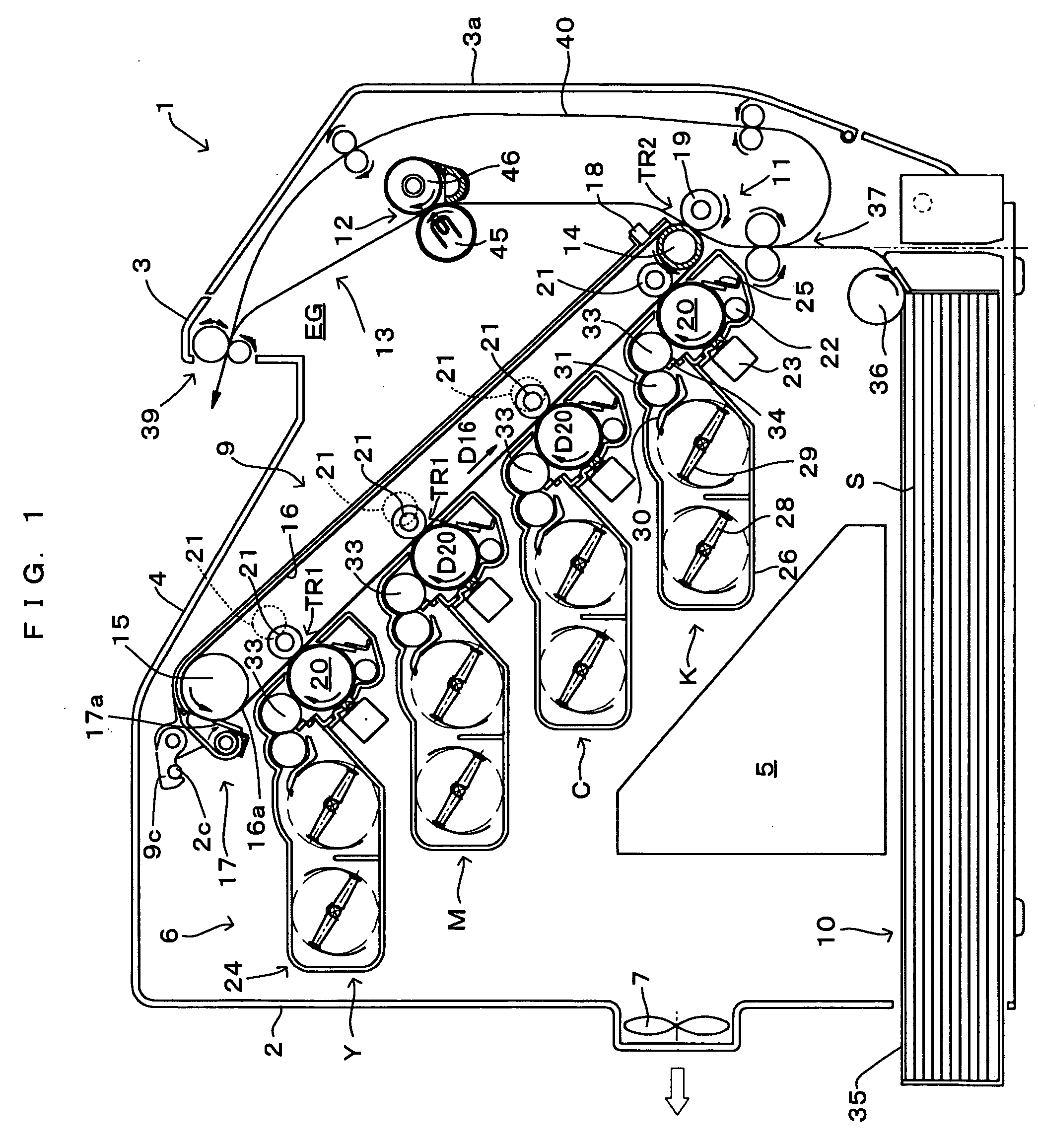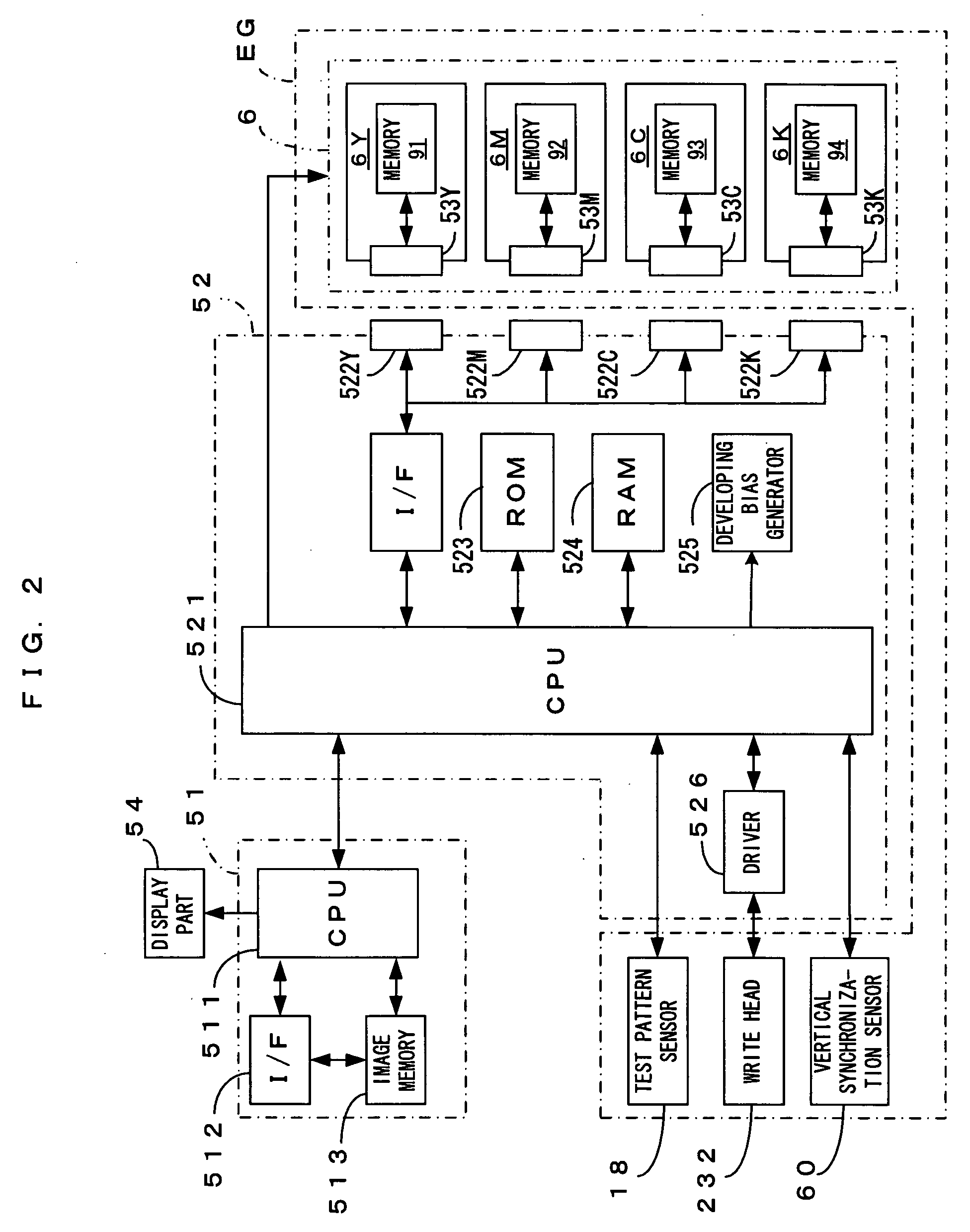Image forming apparatus
- Summary
- Abstract
- Description
- Claims
- Application Information
AI Technical Summary
Benefits of technology
Problems solved by technology
Method used
Image
Examples
first embodiment
[0048]FIG. 1 is a drawing which shows an embodiment of an image forming apparatus according to the present invention. FIG. 2 is a block diagram which shows an electric structure of the image forming apparatus of FIG. 1. The image forming apparatus 1 is an image forming apparatus which selectively executes color printing of superimposing toner (developing agents) in four colors of black (K), cyan (C), magenta (M) and yellow (Y) and accordingly forming a full-color image or monochromatic printing of forming a monochrome image using only black (K) toner. In the image forming apparatus 1, as a main controller 51 receives an image formation command (print command) from an external apparatus such as a host computer, an engine controller 52 controls respective parts of an engine part EG in accordance with a command from the main controller 51, a predetermined image forming operation is executed, and an image corresponding to the image formation command is formed on a sheet (recording mater...
second embodiment
[0086]FIG. 11A and FIG. 11B is a drawing which shows operations of the image forming apparatus which is shown in FIG. 1 according to the second embodiment. This apparatus executes the color misregistration correction which utilizes registration marks at appropriate timing which may be power-on, cartridge exchange or the like. To be more specific, the CPU 521 of the engine controller 52 controls the respective portions of the apparatus in accordance with a program stored in the ROM 523 regarding the color misregistration correction, whereby registration marks are formed and detected and the color misregistration correction is executed in the following manner.
[0087] First, in response to a control command from the CPU 521 of the engine controller 52, the image forming stations Y, M, C and K form, as registration marks RM, halftone toner images formed by two-dimensional halftone patterns of plural lines which extend along the main scanning direction which is orthogonal to the transpor...
third embodiment
[0092] Detection of edge portions of registration marks RM realizes detection of the registration marks RM in the second embodiment as described earlier, whereas the third embodiment requires detecting upstream edge portions of registration marks RM taken along the transporting direction D16. That is, a piece of position information regarding each registration mark RM is detected based on a change of the output signal from the test pattern sensor (optical sensor) 18 which occurs as an upstream portion of the registration mark RM along the transporting direction D16 moves passed the test pattern sensor (optical sensor) 18, and the color misregistration correction is executed based on these pieces of position information. Further, as shown in FIG. 14A, a halftone toner image forming each registration mark RM consists of a linear pattern LP1 extending along the main scanning direction X which is approximately orthogonal to the transporting direction D16 and any desired two-dimensional ...
PUM
 Login to View More
Login to View More Abstract
Description
Claims
Application Information
 Login to View More
Login to View More - R&D
- Intellectual Property
- Life Sciences
- Materials
- Tech Scout
- Unparalleled Data Quality
- Higher Quality Content
- 60% Fewer Hallucinations
Browse by: Latest US Patents, China's latest patents, Technical Efficacy Thesaurus, Application Domain, Technology Topic, Popular Technical Reports.
© 2025 PatSnap. All rights reserved.Legal|Privacy policy|Modern Slavery Act Transparency Statement|Sitemap|About US| Contact US: help@patsnap.com



